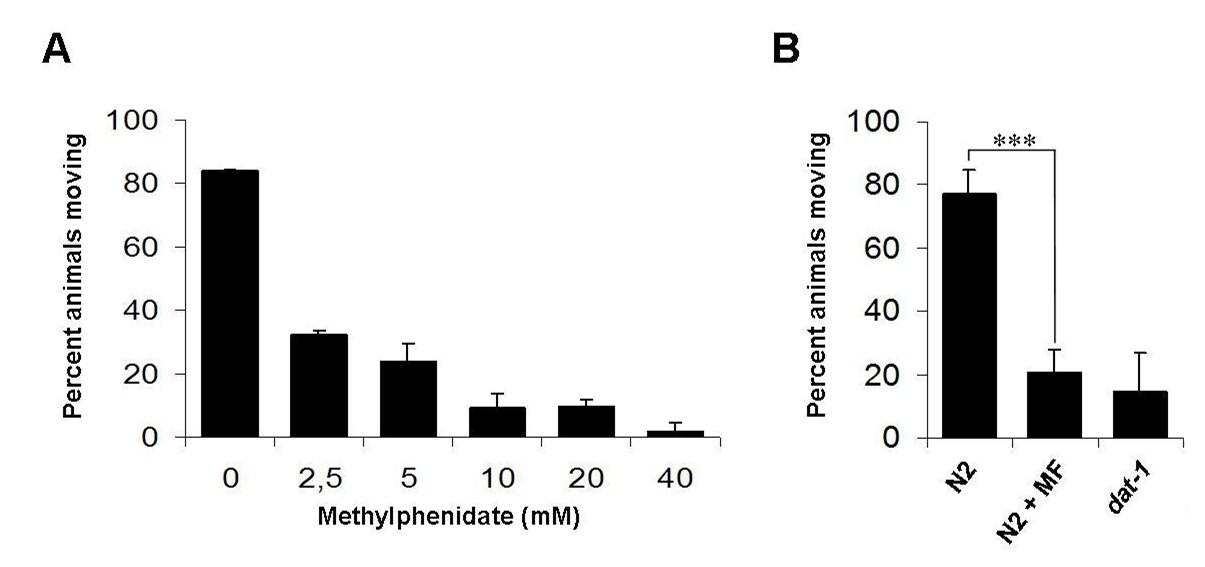In C. elegans, the dat-1 gene encodes a plasma membrane DAT-1, which is predicted to regulate dopaminergic neurotransmission via reuptake of dopamine into the presynaptic neuron. The DAT-1 protein is ortholog of the human SLC6A3. Swimming-induced paralysis (SWIP) is a phenotype of C. elegans described in dat-1-deficient mutants (Mcdonald et al., 2007). It has been proposed that the SWIP phenotype appears in DAT-1-deficient nematodes because in water animals have to exert maximal motor activity, which demand efficient clearance of dopamine mediated by the dopamine transporter (Mcdonald et al., 2007).
Given that the synaptic action of DA is inactivated by reuptake of this neurotransmitter into the nerve terminals from which they are released, the transporter is target for psychostimulants and antidepressant. Thus, methylphenidate is a drug that blocks the human DAT, and it is used widely for treatment of several mental affections including attention deficit hyperactivity disorder.
Here we show that methylphenidate is functional in C. elegans. Figure 1A illustrates a dose-response of C. elegans to methylphenidate indicating that this drug induces SWIP in N2 wild type strain. The SWIP phenotype of N2 animals in presence of methylphenidate (9.3 mM) was similar to that of dat-1(ok157) mutant used as control (Figure 2B). These results suggest that in C. elegans methylphenidate, as in mammals, acts inhibiting the dopamine transporter. In this regard, the worm dopamine transporter DAT-1 protein has 42% aminoacid sequence identity with the human SLC6A3 protein.
Figures

References
McDonald PW, Hardie SL, Jessen TN, Carvelli L, Matthies DS, Blakely RD. (2007) Vigorous motor activity in 
Articles submitted to the Worm Breeder's Gazette should not be cited in bibliographies. Material contained here should be treated as personal communication and cited as such only with the consent of the author.
Leave a Reply
You must be logged in to post a comment.